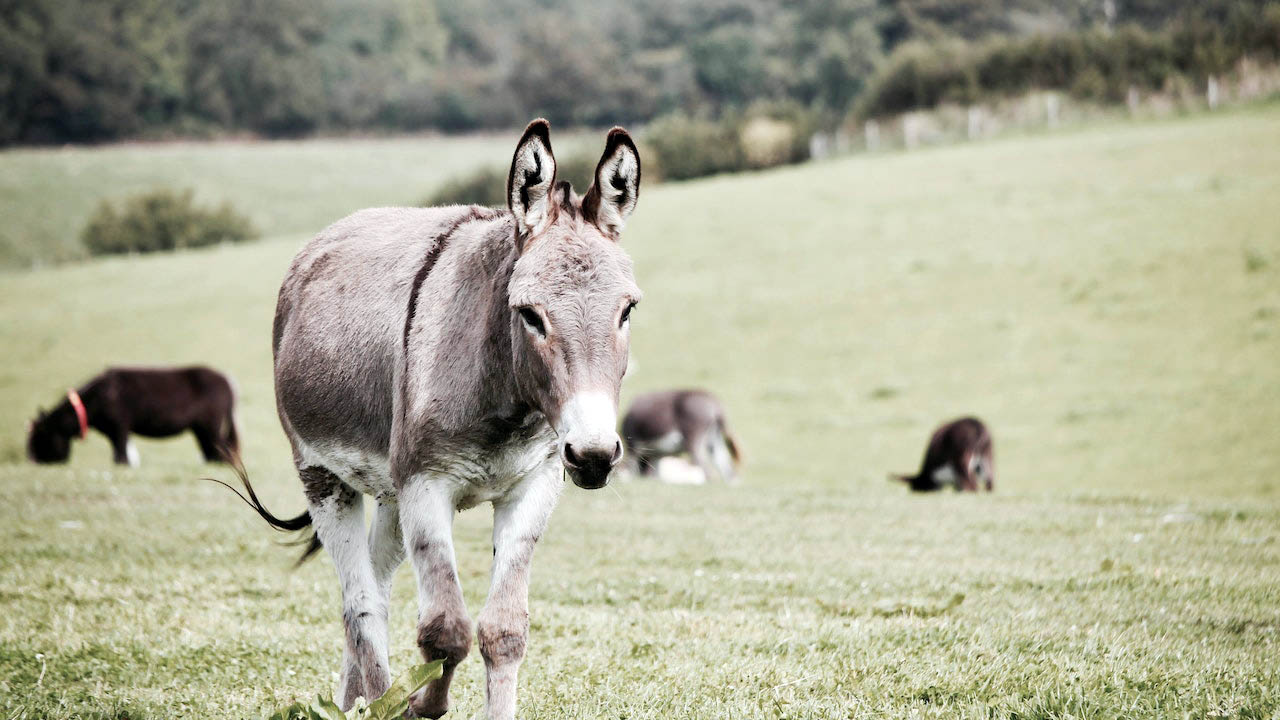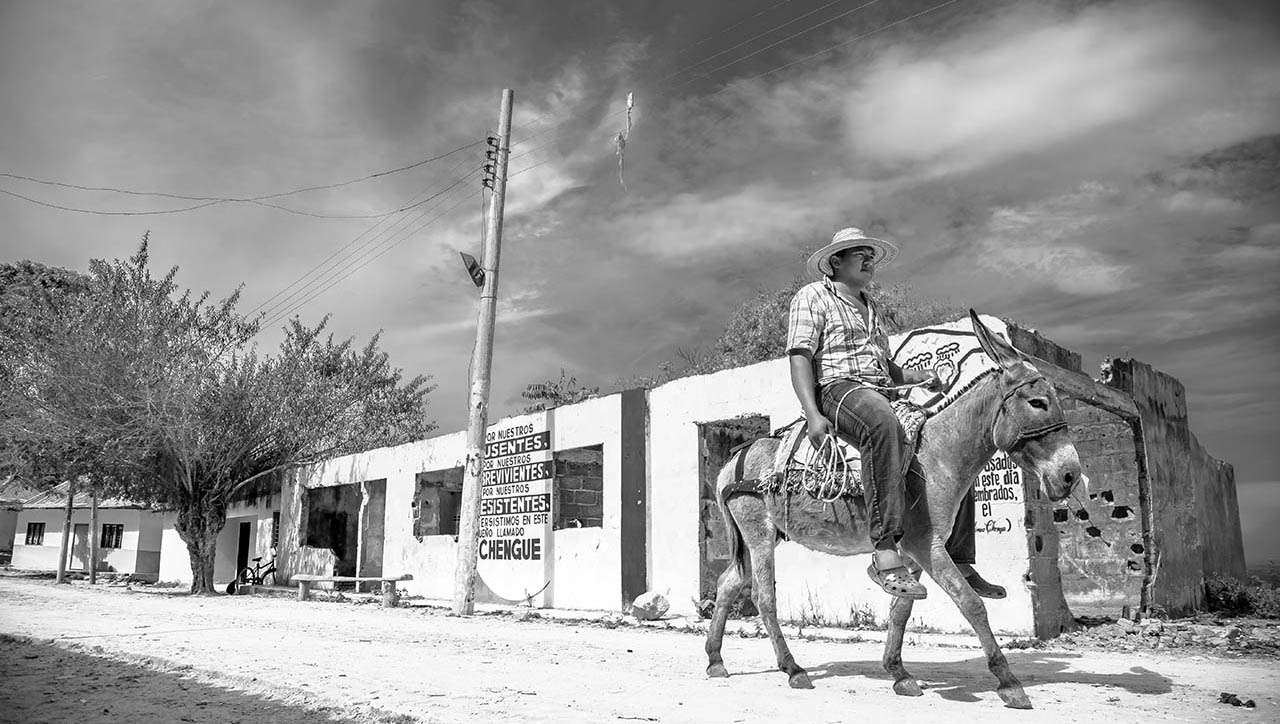Have you ever wondered why is a donkey called a jackass? The answer is simple: because they’re asses! Maybe I am kidding, but maybe not.
So, let’s move forward to know few more!
Why is A Donkey Called A Jackass?: A Jack of All Trades
While the humble donkey might not be the first animal that comes to mind. Especially when you think of a jack of all trades, this hardworking creature more than earns its nickname. Donkeys are intelligent and patient. Making them ideal for a variety of tasks. It’s from carrying loads and plowing fields to serving as companions for other animals. In many parts of the world, donkeys are even used as therapy animals!
While donkeys are known for their loyalty and strong work ethic, they also have a playful side. When they’re not working, donkeys enjoy chasing each other around and playing games. They are also very social animals, forming bonds with both their fellow donkeys and the humans who care for them.
Whether you’re looking for a farmhand or a friend, a donkey is sure to be a jack of all trades. So, that you’ll love having around.
In this article, you are going to read more information about why is a donkey called a jackass.
The History of the Donkey
The donkey, also known as the ass, is a domesticated member of the horse family. Donkeys were first domesticated around 3000 BC in Africa and the Mediterranean. They were brought to Europe by the Romans in the first century AD. And to the Americas by Spanish settlers in the 16th century.
Donkeys are used for a variety of purposes including as pack animals, for riding, and for plowing fields. They are also used as working animals in many countries. In some parts of the world, they are considered a symbol of wisdom and patience.
The word “donkey” is thought to come from the Old English word “dun,” meaning “grey” or “dull brown.” The word “ass” is of uncertain origin but is thought to be derived from the Latin word “asinus.”

The Donkey in Popular Culture
Despite its humble origins, the donkey has played a significant role in human culture and history. Donkeys have been used as working animals for centuries. And their image has been appropriated by a variety of different groups and movements over the years.
The donkey is most commonly associated with the working class and rural poor. And it has become a symbol of strength and perseverance in the face of adversity. In literature and film, donkeys are often used to represent characters who are loyal but taken for granted. And their stubborn nature is often used as a metaphor for sticking to one’s principles.
The donkey also has a long association with Christianity, dating back to its use as a beast of burden during Jesus’ crucifixion. In the Bible, donkeys are often seen as symbols of humility and obedience, and they are often contrasted with horses, which are associated with power and nobility. In modern times, donkeys continue to be used as symbols of these virtues by groups such as the Salvation Army and Habitat for Humanity.
The Donkey as A Symbol
The donkey uses as a symbol in many cultures and religions over the years. In the Bible, the donkey shown as a humble and reliable animal. It is often uses to represent Christ himself. In ancient Greece, donkeys shown as a symbol of fertility and abundance. While in Roman times they are associates with strength and endurance.
Today, the donkey is often seen as a negative symbol. In politics, for example, the word “jackass” is often used to describe someone who is foolish or stubborn. However, there are also many positive associations with the donkey. In some cultures, the donkey is seen as a hard-working and trustworthy animal, an ideal companion for humans on their journey through life.
The Donkey in Art
One of the most common animals in art, the donkey has been a subject of exploration for centuries. Whether it be in paintings, sculptures, or literature, the donkey has been a staple in the world of art.
There are many theories as to why the donkey is so commonly depicted in art. One theory is that the donkey is a symbol of simplicity and innocence. This is evidenced by the fact that many famous works of art featuring donkeys depict them as being calm and docile creatures. Another theory is that the donkey is a symbol of strength and determination. This is supported by the fact that donkeys are often seen as hardworking animals that are relentless in their efforts.
Regardless of the reasons behind its popularity, there is no denying that the donkey holds a special place in the world of art. The next time you see a work of art featuring a donkey, take a moment to appreciate all that this humble creature represents.
The Donkey in Literature
The name “jackass” was first applied to the donkey in the early 17th century. It is thought to be a corruption of the Spanish word “jacacho,” which was used to describe a particularly stubborn donkey. The name quickly caught on, and “jackass” soon became the standard term for the animal in English.
The donkey has long been a staple of literature and folklore. In ancient Greece, the ass was often used as a symbol of stupidity and stubbornness. This association was carried over into Roman times, where the ass became known as the “eternal enemy” of rationality.
The donkey also plays a central role in many Christian stories and parables, most notably in the New Testament story of Jesus’ triumphal entry into Jerusalem. In this tale, Jesus rode on a donkey into the city, fulfilling an ancient prophecy that said the Messiah would come “riding on an ass.”
Despite its long literary history, the jackass has never been particularly popular as a pet or working animal. Donkeys are notoriously stubborn and difficult to train, which likely explains why they have never been as popular as their equine cousins, the horse and the mule.
The Donkey in Religion
The donkey is mentioned many times in the Bible, often in relation to its use as a beast of burden. In some passages, the donkey is presented in a positive light, while in others it is portrayed as stubborn or recalcitrant.
One of the most famous stories involving a donkey is the tale of Balaam and his ass, which is found in the book of Numbers. In this story, Balaam is a prophet who is hired by King Balak to curse the Israelites. On his journey to meet with Balak, Balaam’s donkey encounters an angel of the Lord blocking the path. The donkey tries to avoid the angel, but three times it is knocked down by the angel. Finally, Balaam speaks to the donkey and asks why it has treated him so badly. The Donkey replies, “I have been true to you; have I not always carried you faithfully? Have I ever failed to do what you asked me to do?” Balaam then sees the angel and repents of his plan to curse the Israelites.
The story of Balaam and his ass teaches an important lesson about obedience and being true to one’s responsibilities. It also shows that donkeys can be intelligent creatures that are capable of understanding human speech.

The Donkey in Folklore
Donkeys have been mentioned in many works of literature and folklore over the years. In ancient Greece, donkeys were associated with the god Dionysus, who was often portrayed riding a donkey. In The Odyssey, Homer describes an incident in which Odysseus’s men mistook a herd of donkeys for a flock of sheep and were transformed into donkeys as punishment.
Donkeys also play a significant role in the Bible. In the New Testament, Jesus is often referred to as the “Good Shepherd” who leads his flock (of sheep) by riding on a donkey. In one instance, when Jesus was entering Jerusalem for his triumphal entry, the people laid their cloaks and Palm branches on the road in front of him, referring to him as the “king of Israel” (Matthew 21:1-11).
The Donkey is also a common motif in Chinese folklore. One popular story is “The Legend of the White Snake”, in which a young woman is turned into a white snake by an evil sorcerer. In order to save her loved one from being turned into a donkey by the same sorcerer, she agrees to marry him and take on human form permanently.
The word “jackass” first came into use in the 16th century and is derived from the Middle Dutch word joncker, meaning “little lord”.
Still you are looking for info on why is a donkey called a jackass?
Conclusion
So, we hope, now you know why is a donkey called a jackass? Right? Do you want to know more information regarding this topic? Feel free to ask us. We are here to help you.